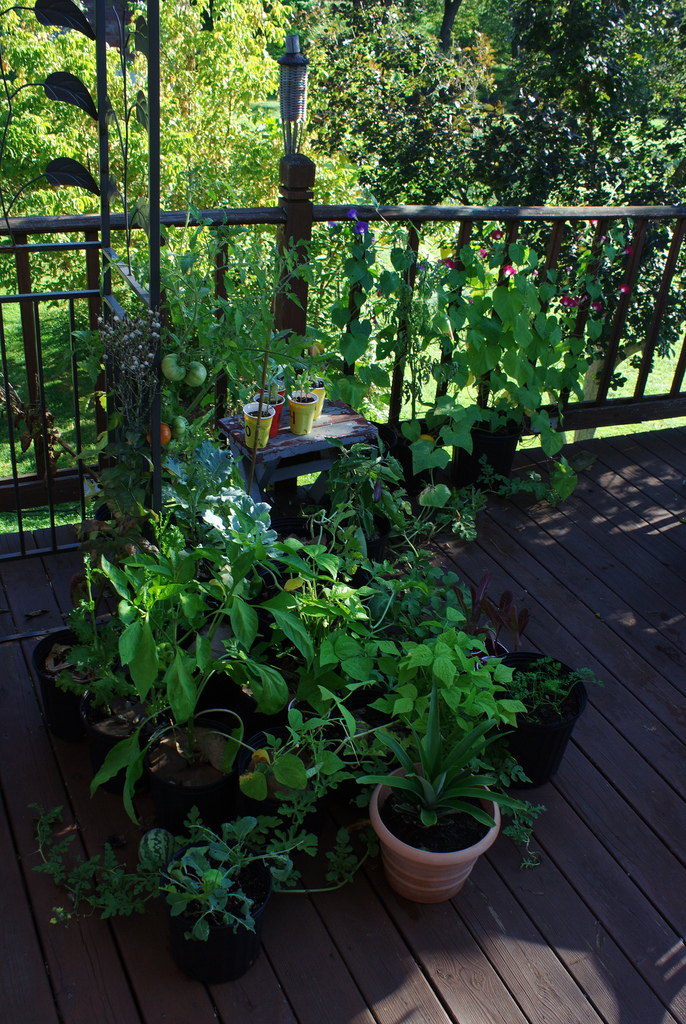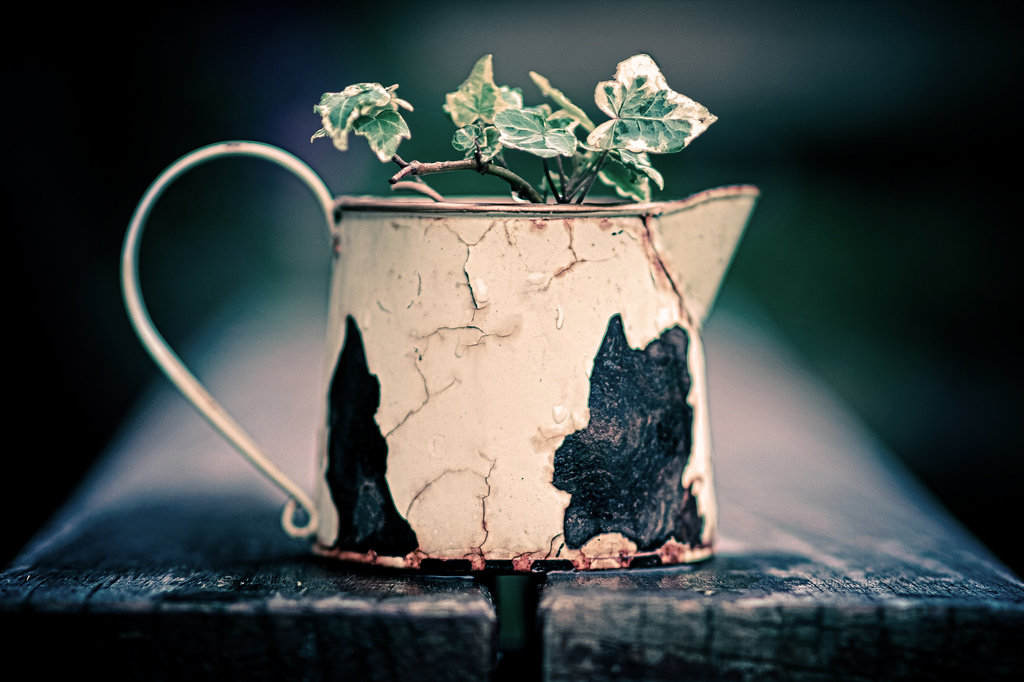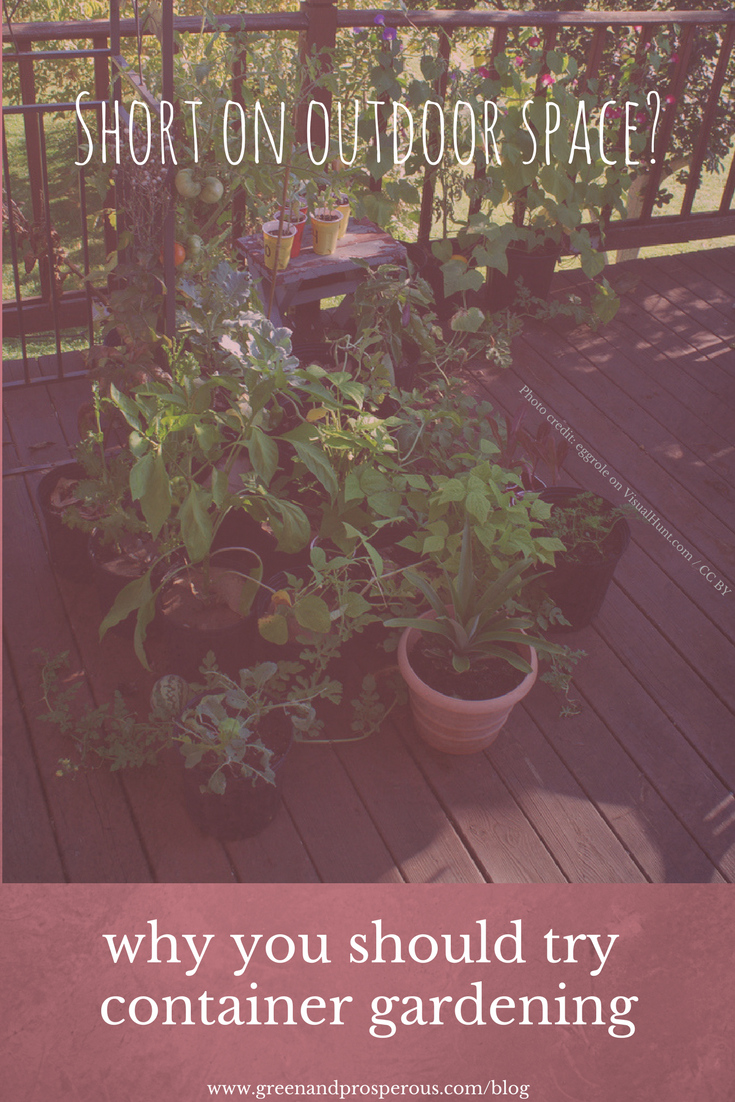Short on outdoor space? Why you should try container gardening
/Spring is here! For some of us, spring is finally here. Although the crazy weather patterns we’ve been experiencing in the mid-Atlantic region where I live have left many of us anxious to go out and dig around in the dirt, others may only be thinking about making this the year they grow some of their own food (or the year they grow more of their own food). If you’re ready to stop thinking about it and start doing but are challenged for space (maybe you live in an apartment of condo, or maybe you have a tiny yard, or your yard doubles as your dog’s bathroom), this post is for you. Maybe you have a healthy growing operation in place already but are starting to suffer from back problems because of all the bending involved in maintaining your garden. If so, this post is for you, too. Or maybe you’re just interested in trying something new or adding new elements to your garden. This post is for you, too.
There are many advantages to growing your own food, which I’ve covered in earlier blog posts. On the whole, growing your own food has many physical and mental health benefits that you may not typically think of, like immune system strengthening and stress relief.
I suspect, if you’re reading this post, that any interest you have in growing some of your own food also coincides with your interest in healthy living. If so, you may be among the growing numbers of people in the US, Canada, UK, and continental Europe who have helped fuel the expansion of homesteading, urban farming, and community allotment gardens in the 21st century.
So what do you do if you want to grow some of your own food but don’t have the space or time to develop a homestead or large plot? What if there are no community gardens nearby or the idea of renting an allotment turns you off? What can you do?
You can grow in containers. It’s easy to get started, fairly straightforward to maintain, and inexpensive. It’s also physically less exhausting than tending ground-level plots!
Photo credit: eggrole on VisualHunt.com/ CC BY
Use wheels for more flexibility
Aside from the relative ease of tending to your container garden, there are many advantages to growing in pots or other containers. If you use casters under your pots, it’s easy to wheel them around, which enables you to move your plants into the sunlight as needed, and to protect them from the harsh weather. I grow most of my vegetables and fruits in pots on my deck upstairs, and it’s easy to shift them all under the patio umbrella when there’s a heavy downpour.
Soil matters
With pots, it’s also easier to get the right soil mix for your plants. Tilling rough, dry, and rocky ground is back-breaking work, and sometimes hidden dangers – like grubs or weevils -- can lurk underneath the soil, waiting for the opportunity to feast on all your hard work. Potting mixes come in a variety of formulas, and when using pots, you can more easily mix in the right amount of nutrients or soil additives to adjust the nutrients, pH balance, or soil density.
Mind your water (usage)
With pots, it’s easier to monitor your water usage (and waste). This is one of the dirtiest secrets of the urban farming phenomenon: many urban farmers waste resources because they don’t adopt sound water management practices. With pots, you will need to water your plants more often, but there are ways to reduce the frequency of watering and waste less. Here are 3 ways. One, place a small pot inside a larger one and fill the space between them with sphagnum moss or crumpled newspaper. When watering the plant, also soak the filler between the pots to keep the plants moist longer. Two, mulch your plants. If squirrels dig up your mulch, use small stones instead. Three, use a rain barrel to harvest water when it rains. Rain barrels can be pricey, but you can easily make one of your own with a large plastic waste bin, some plastic tubing, and a spigot.
Be stingy with your harvest (if you want)
With pots, you don’t have to share your harvest (unless you want to!) I had a hard time growing blueberries until I realized that I had been sharing my harvest with the squirrels and birds! On the other hand, the squirrels who attacked my tomato plants dropped their half-eaten loot into my (then empty) raised bed below, which I only realized was happening when tomato plants began growing out of the bed! You can wrap plastic netting around the pot and plant, securing with clips, to keep freeloading critters away. It’s much cheaper and easier than building a fence!
Be innovative to maximize space and yield
With so many vertical gardening techniques coming into vogue nowadays, it’s easier than ever to learn how to grow more in less space. One of the easiest ways is to get a vertical garden tower, which is basically a series of planters that stack on top of each other, with room for plants to grow out of the sides. You can use a bare wall or a fence to hang planter baskets one above the other, or use a trellis (or make one from wires, bars, or lattice/wooden slats) to allow your plants to climb upwards (trellises work especially well with tomatoes, peppers, pole beans, herbs like basil, oregano and thyme, and any vegetable or fruit that grows on a vine).
Speaking of gardening technologies, innovations like high-tech hydroponics, fertilizing and enzyme-boosting additives, self-watering planters, and apps that have the ability to transmit data about your plant (such as its water and humidity levels) to your computer or wireless device have taken much of the guesswork out of growing in containers. Coupled with the development of disease-resistant strains of plants, the newer technologies have made it easier for even novice gardeners to grow fruits or vegetables in containers.
Repurpose for the greener good
Photo credit: MARK-SPOKES.COM on VisualHunt.com / CC BY-NC-SA
Finally, growing in containers can help cut down on waste by allowing you to repurpose old items you don’t use much anymore. You can grow plants in in containers made from wood pallets, inside old watering cans, and even in old boots that are too worn out to wear! Just be sure to drill holes in the bottom of the container for drainage, and place garden mesh (as needed) under the soil to prevent it from spilling out of the holes. Recycling old items in this way can add aesthetic value to your yard, porch, or patio, and allows you to put your own personal, unique stamp on your garden design.
Interested in a course on container gardening? We’ll be launching our new e-course next month. Subscribe to the mailing list for first access to course previews, bonus materials, and special subscriber discounts!
Like this? Please pin!









































